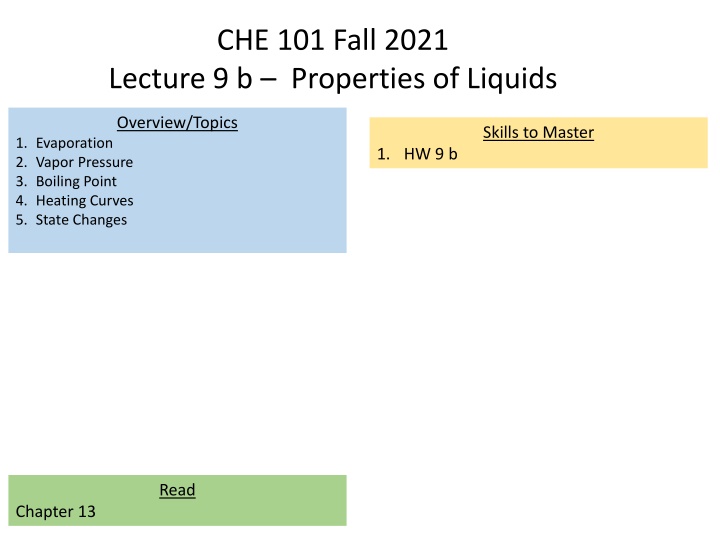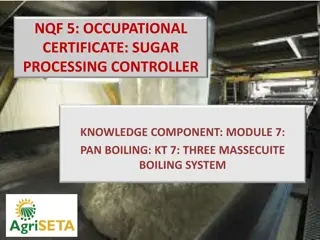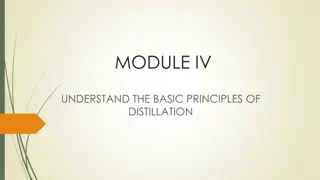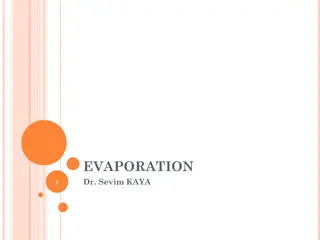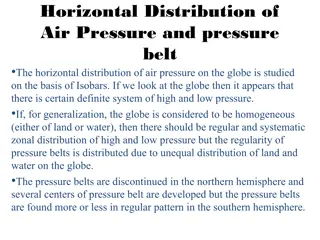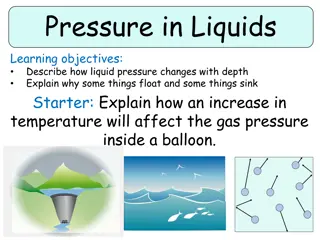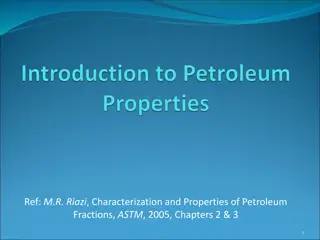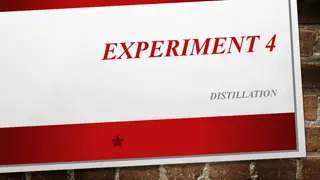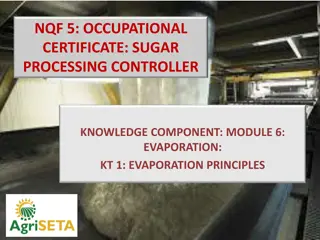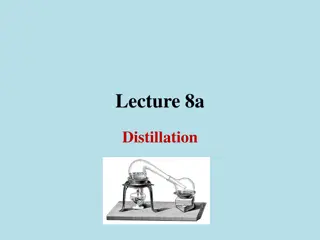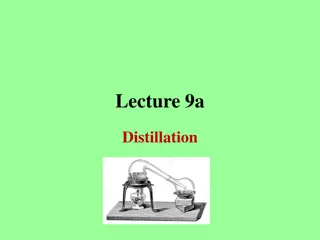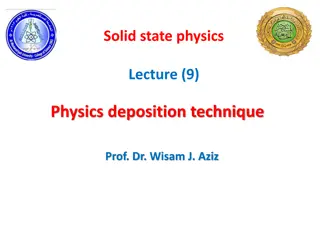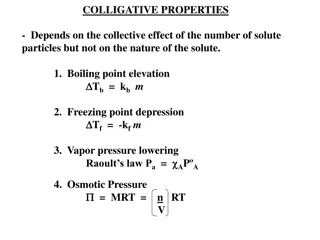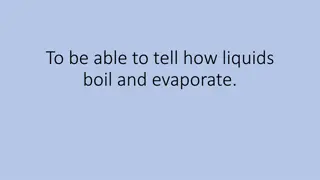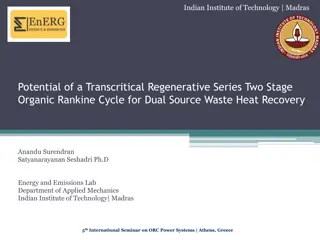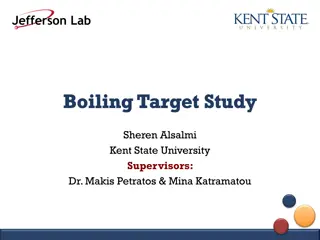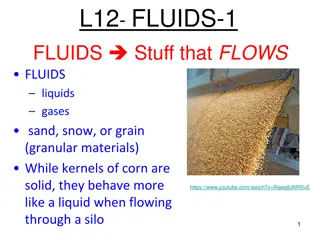Properties of Liquids: Evaporation, Vapor Pressure, Boiling Point
Properties of liquids through topics like evaporation, vapor pressure, boiling point, heating curves, and state changes. Understand the processes of phase changes, heating curves, and energy transformations in substances. Dive into concepts such as sublimation, condensation, exothermic and endothermic reactions, and more.
Uploaded on Feb 24, 2025 | 2 Views
Download Presentation

Please find below an Image/Link to download the presentation.
The content on the website is provided AS IS for your information and personal use only. It may not be sold, licensed, or shared on other websites without obtaining consent from the author.If you encounter any issues during the download, it is possible that the publisher has removed the file from their server.
You are allowed to download the files provided on this website for personal or commercial use, subject to the condition that they are used lawfully. All files are the property of their respective owners.
The content on the website is provided AS IS for your information and personal use only. It may not be sold, licensed, or shared on other websites without obtaining consent from the author.
E N D
Presentation Transcript
CHE 101 Fall 2021 Lecture 9 b Properties of Liquids Overview/Topics Skills to Master 1. Evaporation 2. Vapor Pressure 3. Boiling Point 4. Heating Curves 5. State Changes 1. HW 9 b Read Chapter 13
o Process by which matter changes from one state to another o Physical Changes therefore IMF are important Phase Changes Sublimation Evaporation Melting Freezing Condensation Deposition Exothermic Endothermic High Energy Low Energy
Heating Curve q = m Hvap q = ms T Liquid + Gas q = m Hfus q = ms T Solid + Liquid q = ms T
Heating Curve q = m Hvap Liquid + Gas q = ms T q = m Hfus q = ms T Solid + Liquid q = ms T
E q1q2 Heating Curve 2 Different Process s r Phase Change Heating a Substance Add Energy Molecules move further apart IMF is weakened Temperature Stays Same Add Energy Molecules move faster ( KE) Temperature Increases q = ms T q = m Hvap q = m Hfus
Values on CS Heating Curve Mathematics q = ms T Change in energy required to heat a substance (s, l, g) q = m Hfus Change in energy required to melt/freeze a substance q = m Hvap Change in energy required to evaporate/condense a substance Hsub = Hfus + Hvap
Example: How much energy does it take to transform 200.0 g of Ice at 0.0 C to Steam at 100 C?
Evaporation Process of turning a liquid into a gas (below the boiling point) aka Vaporization Evaporation: liquid gas o Rate of Evaporation is DP to Temperature o Rate of Evaporation is IP to IMF o Rate of Evaporation is Independent of the amount of water KE >> IMF NOT Equilibrium KE = IMF Swamp Coolers
Temperature KE Relationship KE >> IMF KE = IMF KE << IMF KE << IMF KE = IMF KE >> IMF
The pressure exerted on a liquid by a vapor at equilibrium (torr, mm Hg, Atm) Vapor Pressure VP or Pv Evaporation: liquid gas Condensation gas liquid Evaporation: liquid gas Time Dynamic Equilibrium NOT Equilibrium Rate of Evaporation = Rate Condensation Amount of Liquid Amount of Vapor
Dynamic Equilibrium Dynamic Equilibrium Dynamic Equilibrium constantly evaporating and condensing rate is equal Rate of Evaporation = Rate Condensation Amount of Liquid Amount of Vapor Evaporation: liquid gas Condensation gas liquid We see this again in Ch. 14
Vapor Pressure Dependent on: Independent of: o DP to Temperature o IP to IMF s o Size/Shape of the Container o Amount of Liquid Present
Review Ch. 8 Pvap = Patm Boiling Point and Vapor Pressure o Boiling point occurs when the vapor pressure of a liquid is equal to the external (atmospheric) pressure o Atmospheric Pressure is IP to Elevation
Vapor Pressure Boiling Point Intermolecular Forces o Boiling Point is DP IMF o Vapor Pressure is IP IMF Graphs are Relationships between Temperature and Vapor Pressure o If you know one you can find the other o Math equation (too complex, just use the graph!) Similar Graph on CS
Example (a) Label all IMF in the following molecules (b) Order them from Lowest Pv to Highest Pv (a) (b) (c) (d)
